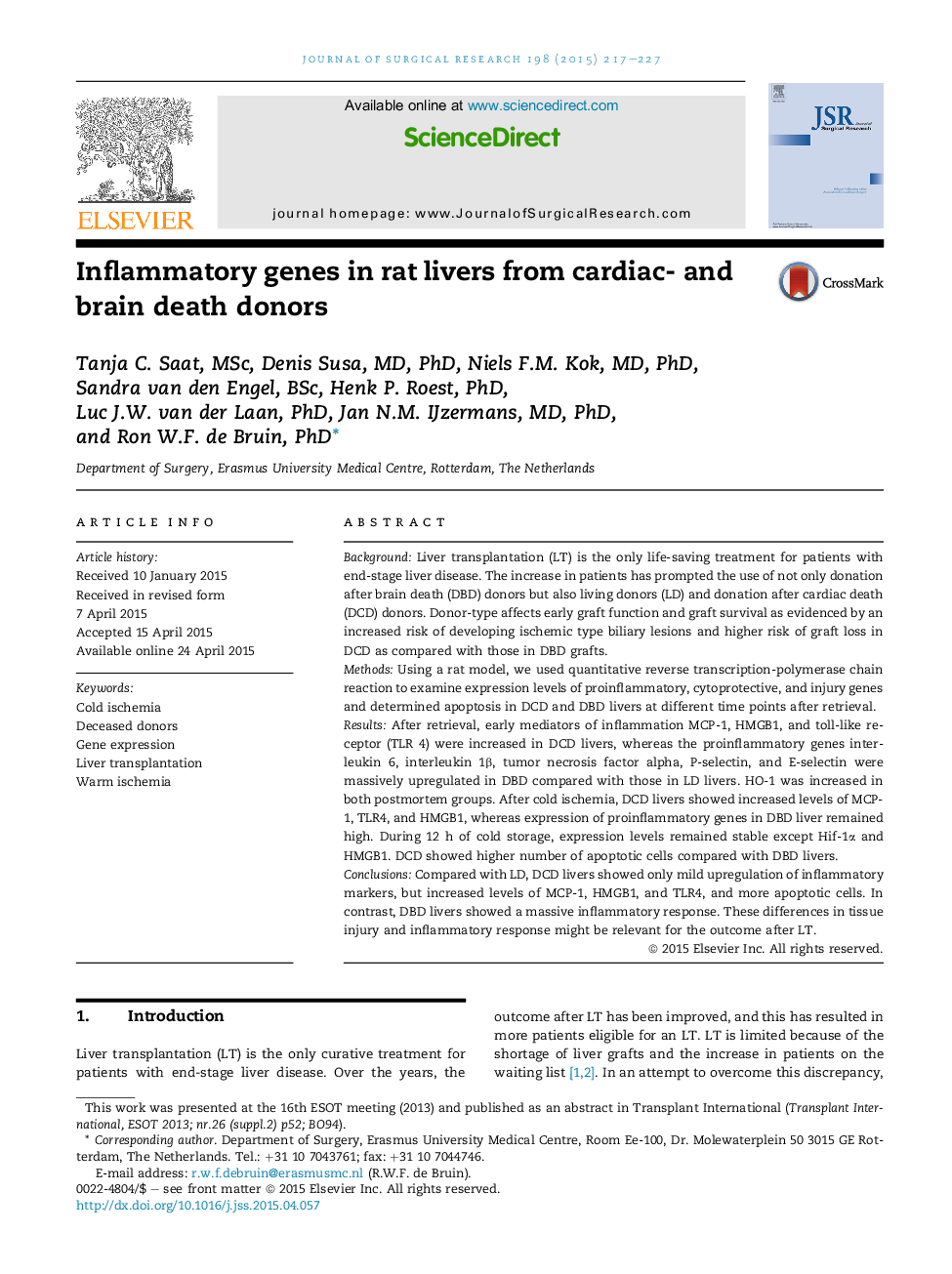| کد مقاله | کد نشریه | سال انتشار | مقاله انگلیسی | نسخه تمام متن |
|---|---|---|---|---|
| 4299573 | 1288394 | 2015 | 11 صفحه PDF | دانلود رایگان |
BackgroundLiver transplantation (LT) is the only life-saving treatment for patients with end-stage liver disease. The increase in patients has prompted the use of not only donation after brain death (DBD) donors but also living donors (LD) and donation after cardiac death (DCD) donors. Donor-type affects early graft function and graft survival as evidenced by an increased risk of developing ischemic type biliary lesions and higher risk of graft loss in DCD as compared with those in DBD grafts.MethodsUsing a rat model, we used quantitative reverse transcription-polymerase chain reaction to examine expression levels of proinflammatory, cytoprotective, and injury genes and determined apoptosis in DCD and DBD livers at different time points after retrieval.ResultsAfter retrieval, early mediators of inflammation MCP-1, HMGB1, and toll-like receptor (TLR 4) were increased in DCD livers, whereas the proinflammatory genes interleukin 6, interleukin 1β, tumor necrosis factor alpha, P-selectin, and E-selectin were massively upregulated in DBD compared with those in LD livers. HO-1 was increased in both postmortem groups. After cold ischemia, DCD livers showed increased levels of MCP-1, TLR4, and HMGB1, whereas expression of proinflammatory genes in DBD liver remained high. During 12 h of cold storage, expression levels remained stable except Hif-1α and HMGB1. DCD showed higher number of apoptotic cells compared with DBD livers.ConclusionsCompared with LD, DCD livers showed only mild upregulation of inflammatory markers, but increased levels of MCP-1, HMGB1, and TLR4, and more apoptotic cells. In contrast, DBD livers showed a massive inflammatory response. These differences in tissue injury and inflammatory response might be relevant for the outcome after LT.
Journal: Journal of Surgical Research - Volume 198, Issue 1, September 2015, Pages 217–227
